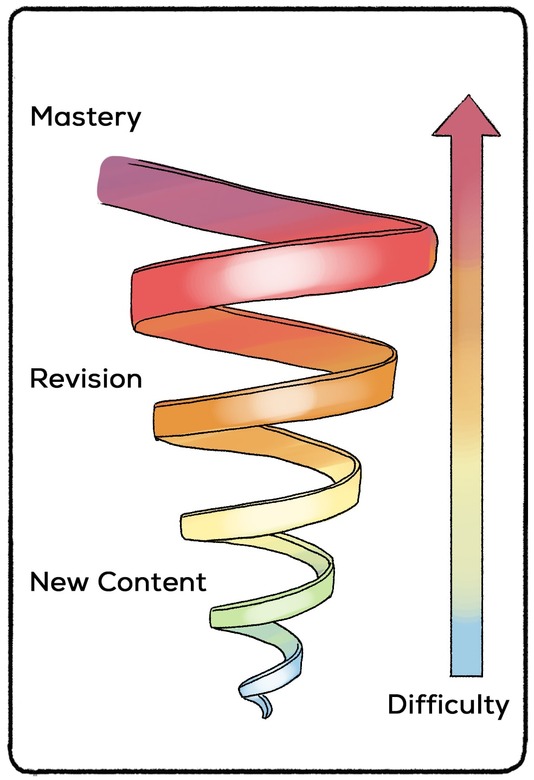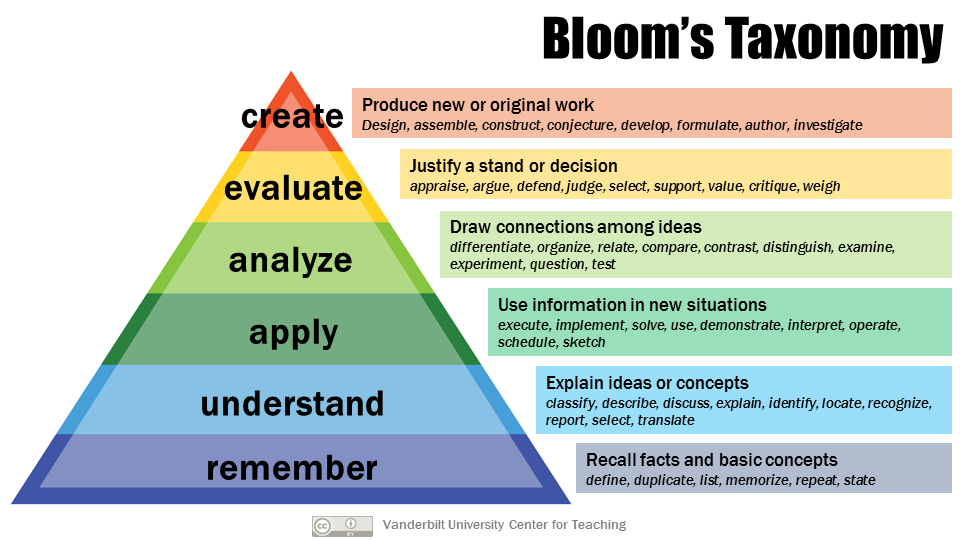Developing a spiral curriculum
What is a spiral curriculum?
Spiral curriculum is model of education/ learning theory in which learning occurs by “an iterative revisiting of topics, subjects or themes throughout the course” (Harden and Stamper, 1999, p. 141). This model of education/ learning theory is widely attributed to the American Psychologist and Cognitive Theorist Jerome Bruner.
 As shown in the image, topics are encountered with increasing complexity according to the learner’s cognitive ability and new learning is built upon previous learning.
As shown in the image, topics are encountered with increasing complexity according to the learner’s cognitive ability and new learning is built upon previous learning.
In the curriculum, ‘fundamental ideas, once identified, should be constantly revisited and re-examined so that understanding deepens over time” Howard (2007, p. 1).
When learners re-engage with a topic repeatedly, they both consolidate prior knowledge in their memory and build on it over time. Each time the content is re-visited, the student gains deeper knowledge of the topic.
The spiral approach to curriculum design reminds us that courses are not singular, set-in-stone units of work. Each course or unit of work that we cover builds upon something previously. In order to design a curriculum using a spiral approach, you need to create units of work that increase in complexity and start off where the previous unit ended.
Key Principles
- Cyclical: Learners should return to the same topic several times throughout their course/ programme
- Increasing Depth: Each time a student returns to the topic it should be learned at a deeper level and explore more complexity
- Prior Knowledge: A student’s prior knowledge should be used when a topic is returned to so that they build from their foundations rather than starting anew.
This approach enables us to work with educators who taught previous semesters, or years, to develop a cohesive approach to teaching.
Leaders, managers and teachers have planned and sequenced the curriculum so that learners can build on previous teaching and learning and develop the new knowledge and skills they need.— Further education and skills inspection handbook
Spiral curriculum and Bloom’s taxonomy
 A group of educators can, use a tool such as Bloom’s Taxonomy to come up with learning outcomes at different stages of a course.
A group of educators can, use a tool such as Bloom’s Taxonomy to come up with learning outcomes at different stages of a course.
Educators would develop learning outcomes that have increasing levels of complexity:
- In the first course, a student might only need to demonstrate ‘understanding’ of the topic
- At the next iteration, learners may need to ‘critique’ or ‘analyse’
- In the final iteration, the learners may need to ‘create’ something from scratch
What are the advantages of a spiral curriculum?
The advantages of this approach to curriculum design (Harden and Stamper, 1999, p. 142) include:
- Reinforcement of learning
- Building new knowledge on prior knowledge with a move from simple to complex
- Integration and continuity between the different parts of the curriculum
- Topics follow a logical sequence
- Learners are encouraged to apply their knowledge and skills, achieving higher level learning objectives
References
- Harden, R., and Stamper, N. (1999). What is a spiral approach to curriculum? Medical Teacher, 21(2): 141-143.
- Howard, J. (2007). Curriculum Development. Elon University: Center for the Advancement of Teaching and Learning.
- Armstrong, P. (2010). Bloom’s Taxonomy. Vanderbilt University Center for Teaching. Retrieved 19 March 2024 from https://cft.vanderbilt.edu/guides-sub-pages/blooms-taxonomy/